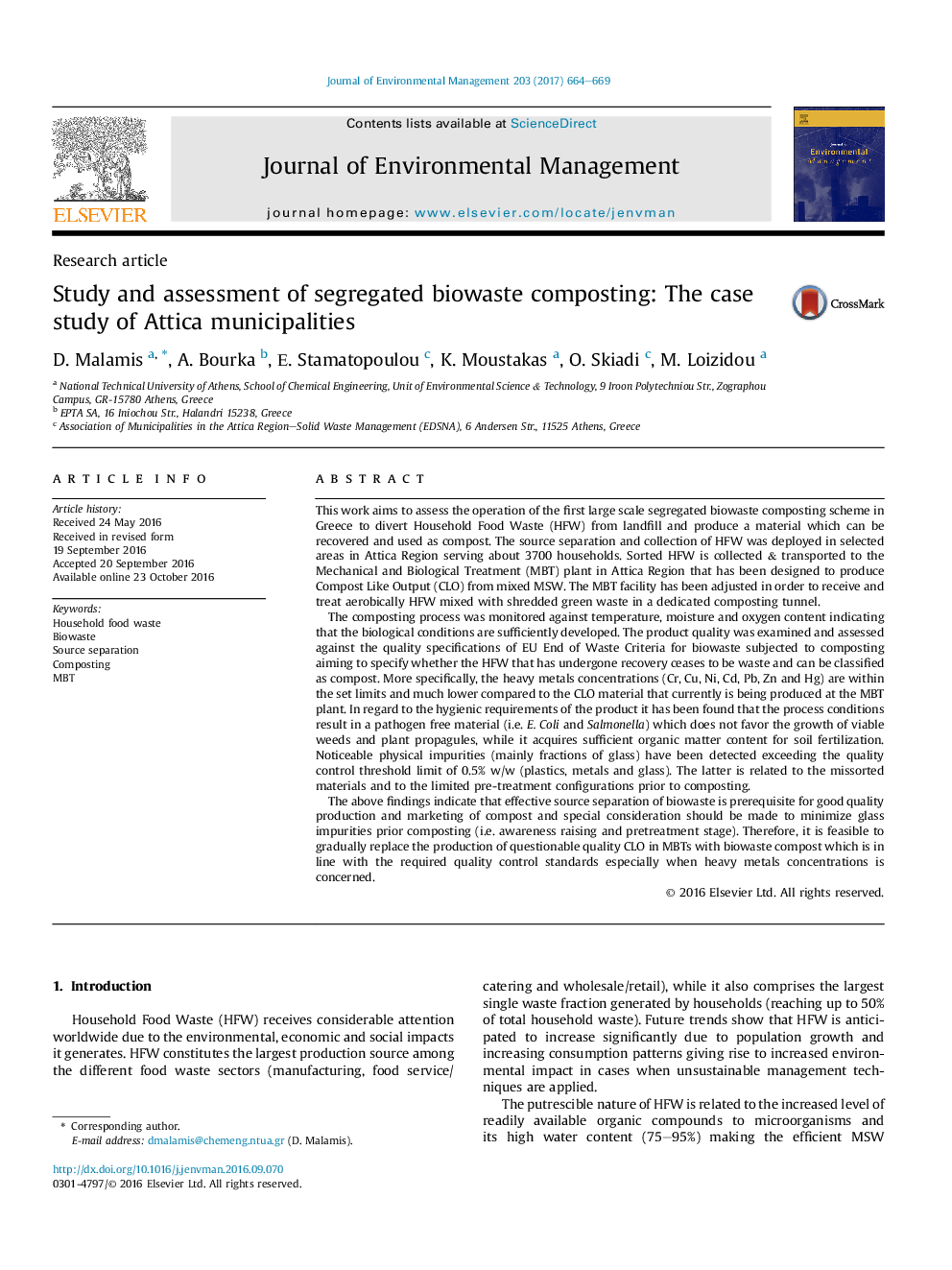| کد مقاله | کد نشریه | سال انتشار | مقاله انگلیسی | نسخه تمام متن |
|---|---|---|---|---|
| 5116423 | 1378097 | 2017 | 6 صفحه PDF | دانلود رایگان |
- HFW source separation schemes is prerequisite so as to obtain good quality compost.
- MBT plants treating separated HFW produce higher quality compost than mixed waste.
- Pretreatment configurations are also needed to achieve compost impurities threshold.
This work aims to assess the operation of the first large scale segregated biowaste composting scheme in Greece to divert Household Food Waste (HFW) from landfill and produce a material which can be recovered and used as compost. The source separation and collection of HFW was deployed in selected areas in Attica Region serving about 3700 households. Sorted HFW is collected & transported to the Mechanical and Biological Treatment (MBT) plant in Attica Region that has been designed to produce Compost Like Output (CLO) from mixed MSW. The MBT facility has been adjusted in order to receive and treat aerobically HFW mixed with shredded green waste in a dedicated composting tunnel.The composting process was monitored against temperature, moisture and oxygen content indicating that the biological conditions are sufficiently developed. The product quality was examined and assessed against the quality specifications of EU End of Waste Criteria for biowaste subjected to composting aiming to specify whether the HFW that has undergone recovery ceases to be waste and can be classified as compost. More specifically, the heavy metals concentrations (Cr, Cu, Ni, Cd, Pb, Zn and Hg) are within the set limits and much lower compared to the CLO material that currently is being produced at the MBT plant. In regard to the hygienic requirements of the product it has been found that the process conditions result in a pathogen free material (i.e. E. Coli and Salmonella) which does not favor the growth of viable weeds and plant propagules, while it acquires sufficient organic matter content for soil fertilization. Noticeable physical impurities (mainly fractions of glass) have been detected exceeding the quality control threshold limit of 0.5% w/w (plastics, metals and glass). The latter is related to the missorted materials and to the limited pre-treatment configurations prior to composting.The above findings indicate that effective source separation of biowaste is prerequisite for good quality production and marketing of compost and special consideration should be made to minimize glass impurities prior composting (i.e. awareness raising and pretreatment stage). Therefore, it is feasible to gradually replace the production of questionable quality CLO in MBTs with biowaste compost which is in line with the required quality control standards especially when heavy metals concentrations is concerned.
Journal: Journal of Environmental Management - Volume 203, Part 2, 1 December 2017, Pages 664-669
